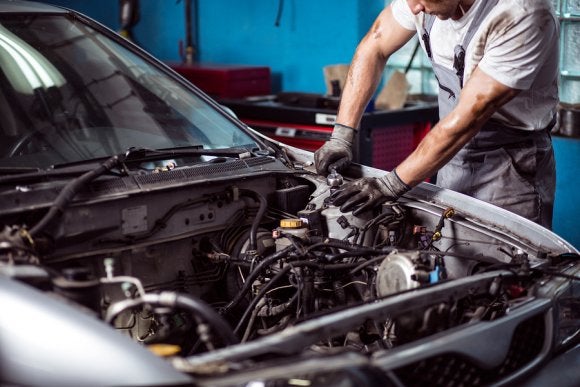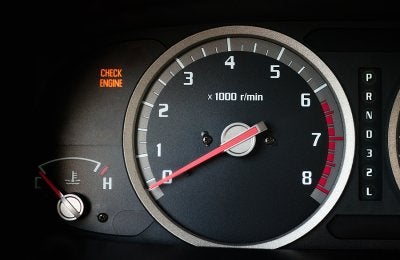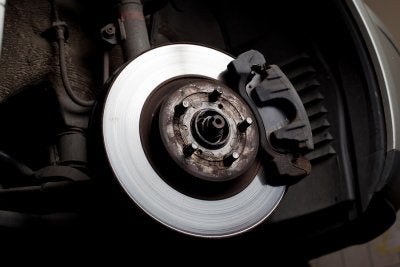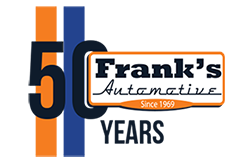-
Knowing the Signs of Engine Trouble
When you’re sick, you go to the doctor; but what about when your car is sick? You would obviously take it to a mechanic, but the problem is knowing when your car needs to be seen in the first place. The longer engine trouble goes undiagnosed, the worse off your car will be and the more you will probably end up spending in the long run on repairs. To save time and money, and to keep your car in the best shape possible, visit an auto repair shop in Sacramento if you recognize any of these telling signs of engine trouble:
- Check engine light, oil pressure light, transmission light, and other dashboard warning lights are illuminated
- You feel a jerking, surging, or stalling sensation while driving
- Unusual engine noises (popping, grinding, squealing, banging, etc.)
- Burnt rubber or gasoline smells inside the cabin
- Blue or white exhaust smoke

-
Reasons Your “Check Engine” Light Is On
One of the great things about modern cars is how they keep drivers informed about problems that are developing. A quick glance at the dashboard can tell you if your tires are low, if you need an oil change, or if your car’s battery is drained. Unfortunately, not all dashboard warnings are that clear or easy to understand. One of the reasons why the “check engine” light is so worrisome for drivers is because of the large number of mechanical and electrical problems that can cause the light to come on. The only way to know for sure is to visit an auto repair shop in Sacramento that specializes in check engine light diagnostics . In the meantime, here’s a look at some the reasons your car’s check engine light might be on.

Loose Gas Cap
Believe it or not, that check engine light might be as easy to fix as tightening your gas cap. Various engine sensors can tell when the gas cap is loose (or cracked and not fitting properly), causing the check engine light to illuminate. If your gas cap seems to be cracked, replace it and see if that fixes the problem before you bring your car to an auto repair shop for electronic diagnostic services.Faulty Oxygen Sensor
One of the most common check engine light causes in a faulty oxygen sensor. There are a number of reasons why the O2 sensor can fail, including corrosion due to internal engine leaks and using gas with a higher ethanol concentration than the engine is designed to handle. If the O2 sensor is to blame, it’s in your best interest to have it repaired or replaced as soon as possible as a faulty oxygen sensor can cause a significant drop in fuel economy.
Broken Thermostat
A car’s thermostat regulates engine temperature by opening and closing to regulate the flow of coolant. Over time, the thermometer can become corroded and fail to properly regulate the engine’s temperature. If this happens, the check engine light can come on so you seek auto repair and fix the broken thermostat to keep the engine from overheating.
-
Signs of Transmission Problems
Knowing the signs of transmission problems can save you a lot of time, headache, and money. The sooner you recognize that your transmission is going out, the easier and generally less expensive it is to fix as opposed to waiting until the transmission goes out completely and you have to tow your car in for major transmission repair or replacement. Watch this video to learn about some of the signs that your transmission needs to be looked at by a professional.
If you recognize any of these signs discussed in this video, or suspect a problem with your transmission for any reason at all, visit an auto repair shop in Sacramento as soon as possible to avoid a bigger repair bill later on. And if you drive an Audi, BMW, Mercedes-Benz, Volkswagen, or Volo, visit a shop that specializes in German auto repair to ensure that your car receives the right services from technicians trained to work exclusively on German automobiles.
-
What Do Different Brake Sounds Mean?
You don’t have to be a mechanic to know when something is wrong with your car. You drive it every day, which means you’ll notice when something is wrong based on how it feels or sounds. For instance, you may notice unusual sounds when you apply the brakes. There are a number of issues that can cause unusual brake noises, and depending on the type of noise you are hearing you might be able to troubleshoot or diagnose the problem before it gets any worse. If you hear any of these noises, visit a brake repair shop in Sacramento .

Screeching
High-pitched noises, usually of the screeching or squealing variety, usually indicate that your brake pads are worn down and need to be replaced. Modern brake pads are equipped with wear indicators that emit a high-pitched squeal when the pad has worn down to the point where it needs to be changed. In rare cases, these noises can also indicate broken anti-rattle clips or worn-out brake pad insulation. In any case, have your brakes looked at as soon as you hear this noise.
Rattling
Brake rattle is most often heard when you let up off the pedal, and it usually sounds like someone shaking a can of spray paint. Although brake rattle can happen because of expansion of the brake pads due to heat, this rattle should not be consistent and should never occur while you have your foot on the brake pedal. Under either of these conditions, bring your car to a brake repair shop to make sure it’s not a more serious problem.
Grinding
You know that screeching sound you’ve been ignoring for the past three months? By now it’s probably a grinding sound, and that’s bad news for your brakes and your wallet. In most cases, this noise is heard when brake pads wear out completely and cause the steel backing of the worn-out pad to grind against the brake rotor. If you hear a grinding noise, get your car to an auto repair shop in Sacramento ASAP to avoid expensive repair costs.
RECENT POSTS
categories
- Uncategorized
- Automotive
- automotive diagnostics services
- Frank’s Automotive
- auto shop
- oil change
- Auto mechanic
- Maintenance
- maintenance schedule
- Catalytic Converter
- Engine Light
- oxygen sensor
- Transmission Problems
- BMW
- Pre-Purchase
- Brakes
- Anti-Lock Brakes
- Auto Diagnostics
- Alternator Repair
- Slipping Transmission
- Engine Trouble
- Brake Sounds
- Frank’s Automotive
- Frank Lettini
Archives
2022
2020
2019
2017
2016
- December (4)
- November (5)
- October (4)
- September (4)
- August (4)
- July (4)
- June (4)
- May (4)
- April (4)
- March (4)
- February (4)
